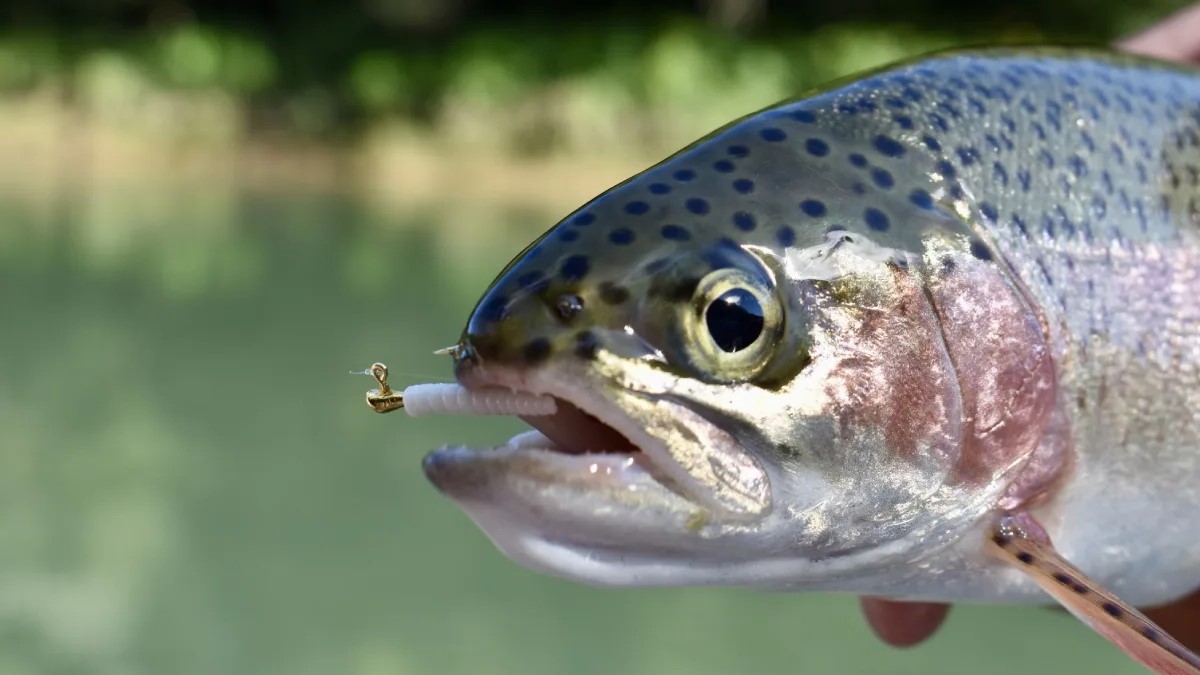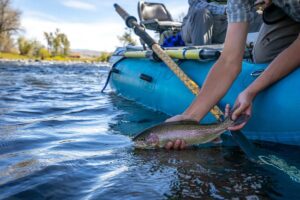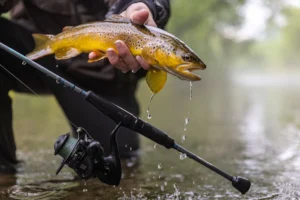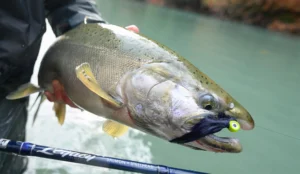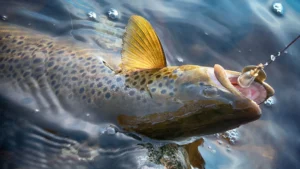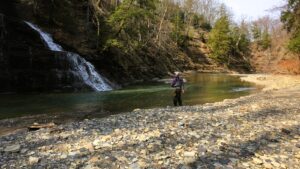Trout fishing is a timeless pursuit enjoyed by anglers of all skill levels, from kids on their first cast to seasoned fly fishermen. One of the most common questions among trout anglers is whether to use bait or artificial lures. The answer depends on several factors, including the fishing conditions, location, and personal preference. In this post, we’ll break down the pros and cons of both bait and lures to help you decide what works best for your next trout trip.
Bait Fishing for Trout
Bait is often the go-to method for beginners and those fishing stocked lakes or slow-moving streams. It’s simple, effective, and often deadly when trout are feeding passively.
Common Trout Baits:
- Worms (nightcrawlers, red wigglers, mealworms)
- PowerBait (especially effective for stocked trout)
- Salmon eggs
- Corn (often used in stocked ponds)
- Minnows (live or dead)
Pros:
- High success rate, especially with stocked or pressured trout.
- Minimal movement required — perfect for passive or cold-water fish.
- Great for beginners and children.
Cons:
- Less active and engaging than lure fishing.
- Can be messy and requires more gear (bait containers, hooks, etc.).
- Often not allowed in catch-and-release or artificial-only areas.
Lure Fishing for Trout
Lures are designed to mimic natural prey like minnows, insects, or crustaceans. They require a more active approach, with casting and retrieving techniques that engage the angler more fully.
Popular Trout Lures:
- Spinners (e.g., Panther Martin, Rooster Tail)
- Spoons (e.g., Kastmaster, Little Cleo)
- Crankbaits (small sizes that mimic baitfish)
- Soft plastics (grubs, minnows on jig heads)
- Flies (dry flies, nymphs, streamers for fly anglers)
Pros:
- More exciting and interactive style of fishing.
- Allows for covering more water and locating fish.
- Reusable and cleaner than bait.
- More effective for targeting wild, wary trout.
Cons:
- Steeper learning curve; requires more skill and knowledge.
- Less effective in cold water or when fish are inactive.
- More gear-intensive (rods, reels, tackle boxes).
When to Use Bait vs. Lures
Use Bait When:
- Fishing stocked ponds or small streams.
- Targeting lethargic or cold-water trout.
- You’re looking for a simple, set-it-and-wait approach.
Use Lures When:
- Fishing moving water (rivers, creeks).
- Targeting wild or larger trout.
- You enjoy an active, skill-based fishing experience.
Final Verdict
There’s no one-size-fits-all answer — both bait and lures have their place in a trout angler’s toolkit. If you’re after quick action in a stocked lake, bait might be your best bet. But if you enjoy a more dynamic and skillful approach, lures offer an exciting challenge with the potential for bigger rewards.
Ultimately, the best approach is to be versatile. Try both methods, observe what the trout are responding to, and let the conditions guide your choice. The more adaptable you are, the more trout you’ll put in the net.

